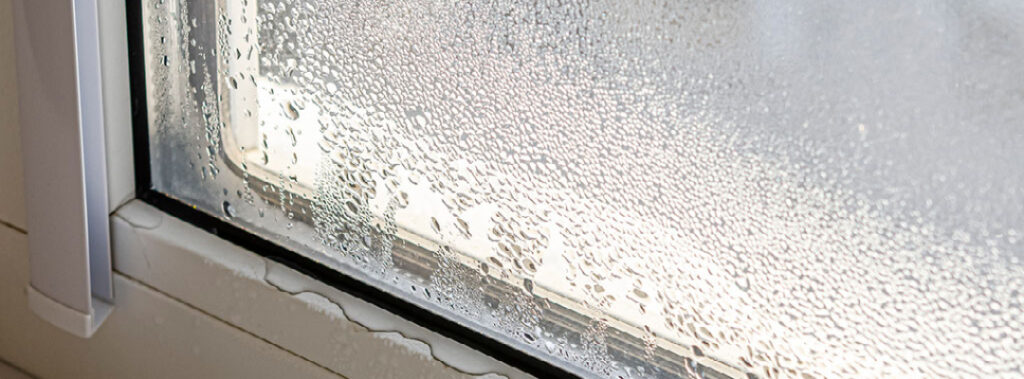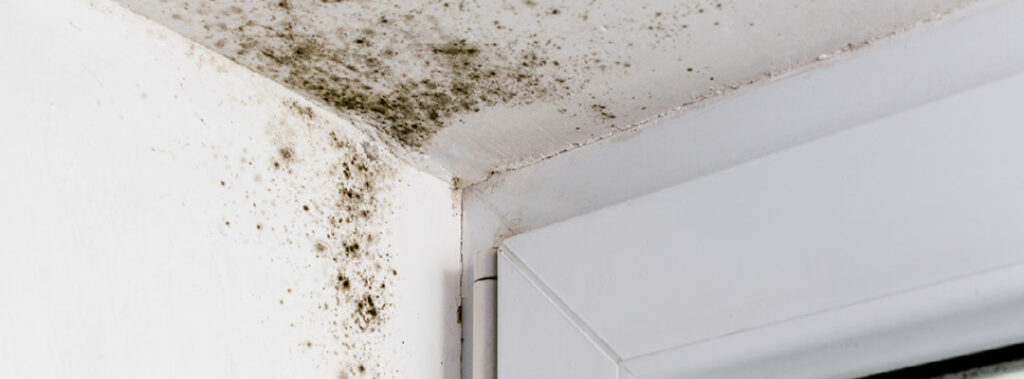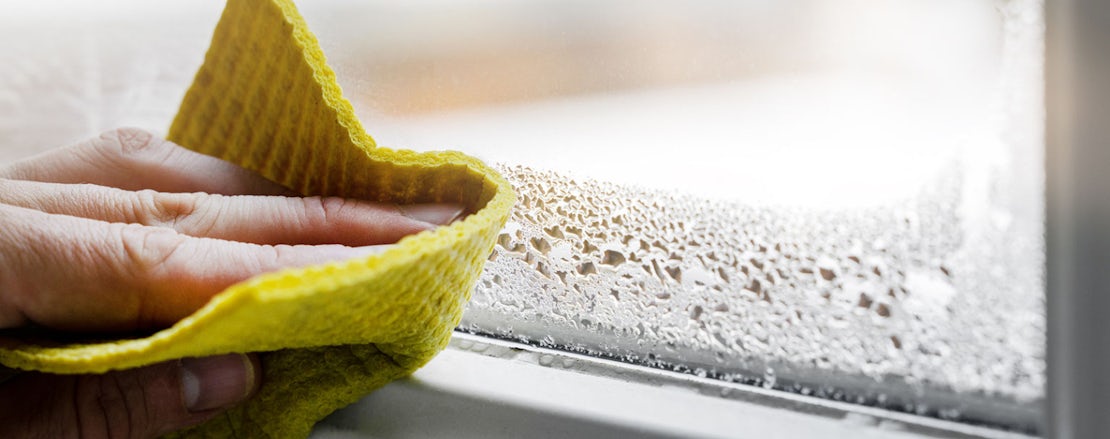Property Care Guide
Preventing condensation and mould is essential to look after both our own health, and the health of our homes – this guide will help you to identify condensation and how to prevent it.
Each year as we move into the colder winter months, we see an increase in the number of tenants reporting issues with mould. In 2022, the issue became more prominent as tenants restricted their use of heating to save money.
Often, we find that tenants presume that mould in their property is due to dampness because of a defect in the property, such as an issue with water penetration. However, on further investigation, the cause usually turns out to be condensation.
We understand that this winter will be a challenging time for many, so we have partnered with Apex Property Care, specialists in dampness and timber decay. This guide aims to help tenants to prevent condensation and mould in their homes.

Does your home have damp or condensation?
First, lets consider the difference between condensation and damp.
What is dampness?
Dampness can originate from:
- Leaking pipes, wastes, drainage and overflows;
- Rainwater from defective roof coverings, blocked or leaking gutters and broken pipes;
- Penetrating dampness around windows, through walls and due to raised ground levels;
- Rising damp due to lack of, or no effective, damp proof course.
‘Condensation dampness’ is a condition that affects many homes and has probably become the major cause of ‘environmental’ dampness within a property. Condensation is particularly common in homes which are poorly heated and insulated and usually gets worse in the colder winter months – often referred to as ‘the condensation season’.
What is condensation?
There is always some moisture in the air, even if you cannot see it. If the air gets colder, it cannot hold all the moisture so tiny drops of water appear. This is condensation. You also notice it when you see your breath on a cold day, or when the mirror mists over when you have a bath or shower.
Kitchens and bathrooms are often primary sources of atmospheric water. Moisture is released into the air through normal daily activities such as washing, cooking, drying clothes, showering and bathing. Condensation can occur commonly on windows or external walls, or cold surfaces within the framework of the property. Look for it in corners, on or near windows, in or behind wardrobes and cupboards. It often forms on north-facing walls.
How does condensation cause damage in your home?

The most tell-tale sign of condensation is staining and the development of mould growth in your home. These can cause damage throughout your property, across everything from wallpaper, wall surfaces, and window frames, to furniture and even clothing.
Mould can vary in appearance, depending on the specific type of mould and the surface on which it grows – it may be black, white, yellow, or green in colour. For example, black spot mould forms in wall corners and at wall/floor or wall/ceiling margins because of condensation.
Moulds are hydrophilic fungi, meaning that they require high levels of surface moisture. The high levels of free moisture caused by condensation on surfaces allows the mould to germinate. In contrast, capillary-held dampness (such as rising damp – moisture from the soil that spreads through micro-cracks, or capillaries, in the building) is not sufficient to cause mould growth.
What to do when condensation appears
You need to deal with condensation each time it appears, as well as taking steps to prevent condensation and mouldin the longer term.
During the condensation season you should wipe off the condensed water from windows and sills every morning. Wring out the cloth into a sink rather than drying it out on a radiator.
Maintaining a reasonable balance between heating, ventilation, and insulation can reduce excessive condensation. However, it’s also important to consider how to avoid condensation in the first place.
How to prevent condensation and mould
Prevention is better than cure
The only lasting way of avoiding severe mould is to eliminate the cause of the dampness – condensation.
Using a dehumidifier can control the airborne moisture and help reduce this problem. However, dehumidifiers will not solve the cause(s) of the condensation problem. So, what else should you do?
Heat your home a little more
In cold weather, the best way to keep rooms warm enough to avoid condensation is to keep low background heating on all day, even when there is no one at home. The recommended level is around 18 degrees. This is very important in flats and bungalows and other homes where the bedrooms are not above a warm living room.
- If you have central heating, set it to provide background warmth in ALL rooms, including unused rooms, during colder periods.
- Thermostatic radiator valves will help control heating and costs.
- Remember to provide background ventilation at the same time.
Produce less water
Reduce the potential for condensation by producing less water:
- Always cook with pan lids on and turn the heat down once the water has boiled. Only use the minimum amount of water for cooking vegetables.
- When filling the bath, run the cold water first then add the hot – it will reduce the steam which leads to condensation by up to 90%.
- Never dry laundry on radiators.
- Dry washing outdoors if possible, or put it in the bathroom with the door closed and the window open or extractor fan on.
- Ensure extractor fans are used and are operating efficiently.
- If you use a tumble dryer, make sure it is vented to the outside or that the tumble dryer is of the new condensing type.
- Don’t use your gas cooker to heat your kitchen as it produces moisture when burning gas.
- Never use bottled gas heaters as they produce about eight pints of moisture from an average-sized gas bottle.
Ventilate to remove moisture
You can ventilate your home without making draughts. Some ventilation is needed to get rid of the moisture being produced at the time, including that from people’s breathing.
- Keep trickle vents open at all times, alternatively open a small window/top lights.
- Kitchen and bathrooms require more ventilation – cooking, washing, bathing and drying create high levels of moisture so you need to open windows.
- Ensure extractor fans are used and are operating efficiently.
- Close the bathroom and kitchen doors when these rooms are in use, even if the kitchen or bathroom has extractor fans. This stops the moisture reaching other rooms, especially bedrooms which are often colder and more vulnerable for condensation.
- Allow space for the air to circulate in and around your furniture.
- Open doors to ventilate cupboards and wardrobes.
- Leave space between the backs of wardrobes and the wall.
- Where possible, position wardrobes and furniture against internal walls (walls which have a room on both sides) rather than external walls.
- To reduce the risk of mildew on clothes and other stored items, allow air to circulate round them by removing ‘false’ wardrobe backs or drilling breather holes in them.
- You can place furniture on blocks to allow air to circulate beneath.
- Never overfill wardrobes and cupboards as it restricts air circulation.
Mould Cleaning
Following the steps in this guide will to prevent condensation and mould – however, if you have mould present in your home then it’s vital that you clean it away regularly. The best way to clean mould depends on the surface to be cleaned – and it’s important to get it right.
If you have mould present in your home then please get in touch with us, and our team of property experts will advise you. Pop in to see us at 39 Warrender Park Road, Edinburgh, EH9 1EU, give us a call on 0131 229 4001, or email us at [email protected].
